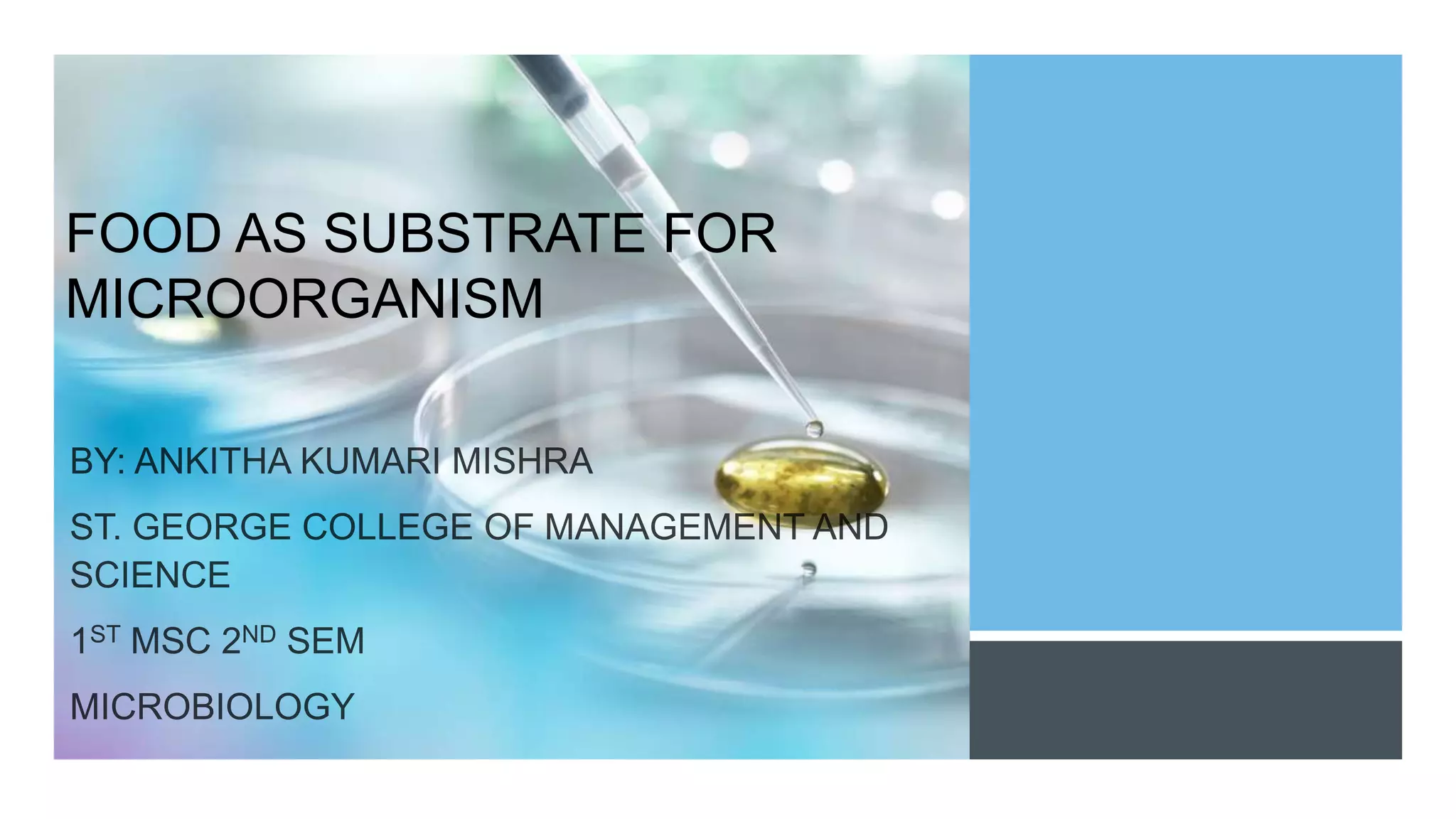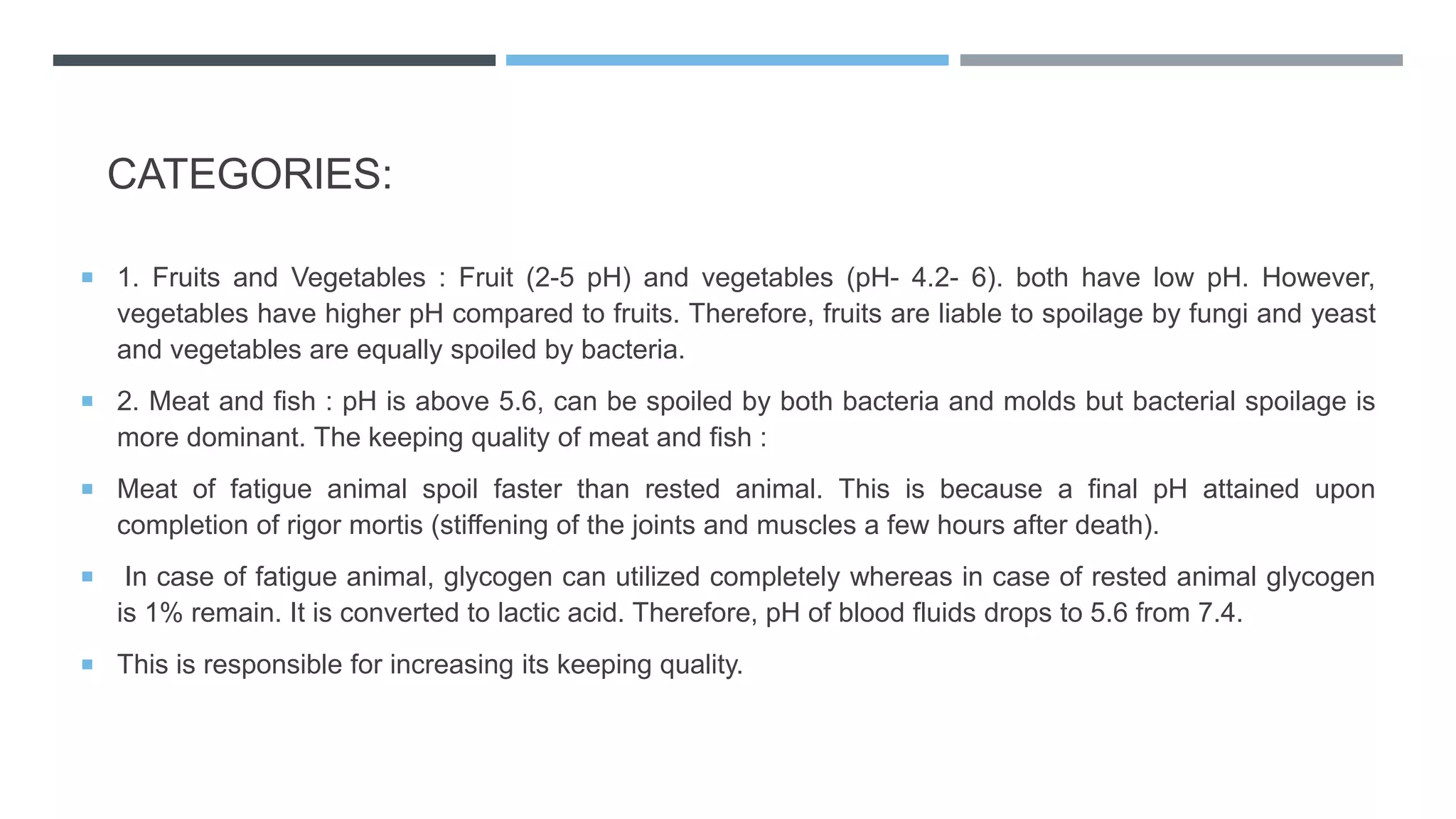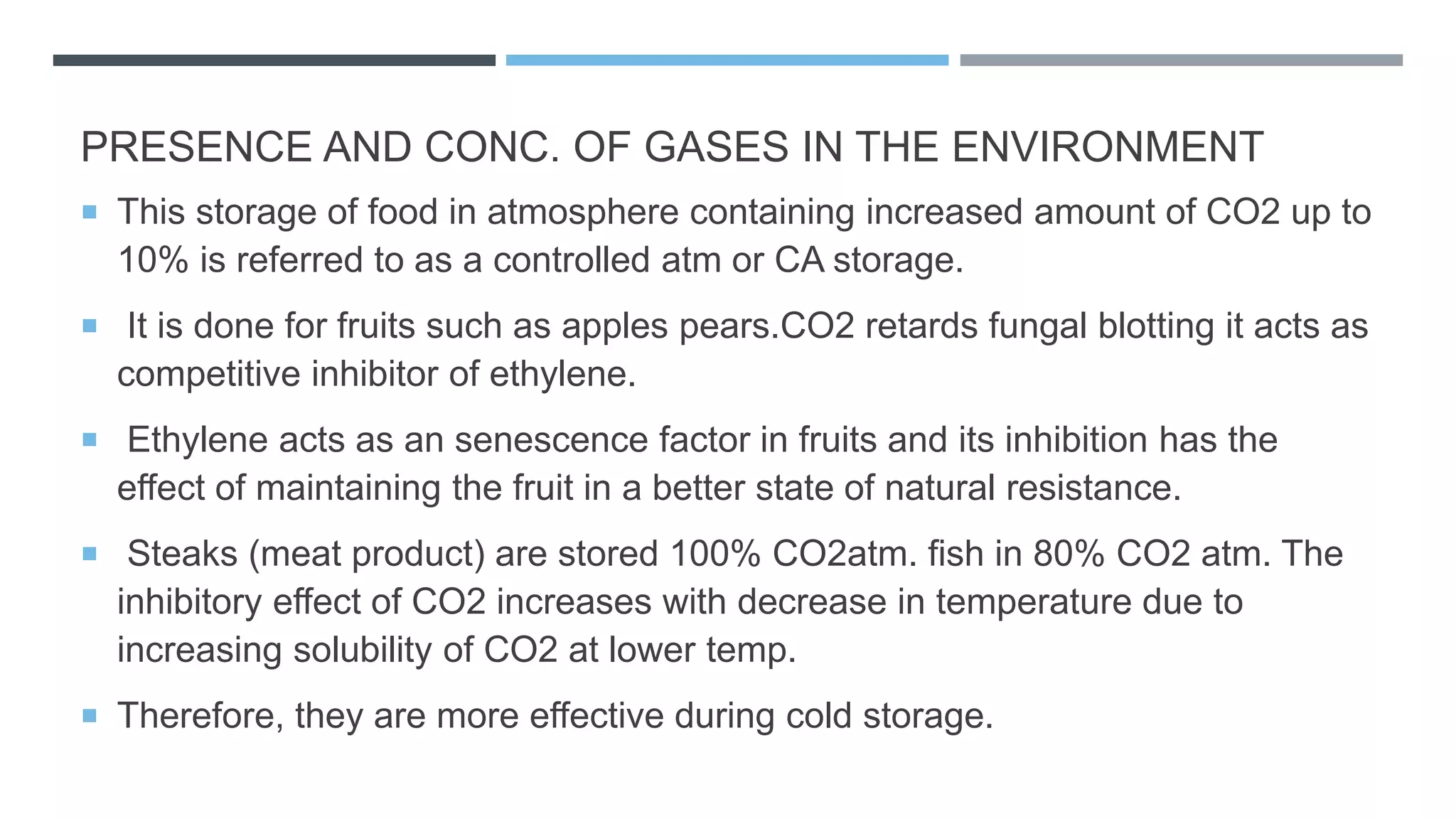Microbial growth in food depends on intrinsic, extrinsic, and implicit factors. Intrinsic factors include the food's pH, moisture content, and nutrients. Most bacteria grow in foods with pH above 4.5 while fungi can grow in all foods. Foods also contain antimicrobial constituents that inhibit microbes. Extrinsic factors are the storage environment's temperature, humidity, and gases. Temperature and humidity control can prevent microbial spoilage. Carbon dioxide inhibits fungi and ethylene to preserve foods longer. Both intrinsic food properties and extrinsic storage conditions impact the microbes that can grow and spoil foods.




















